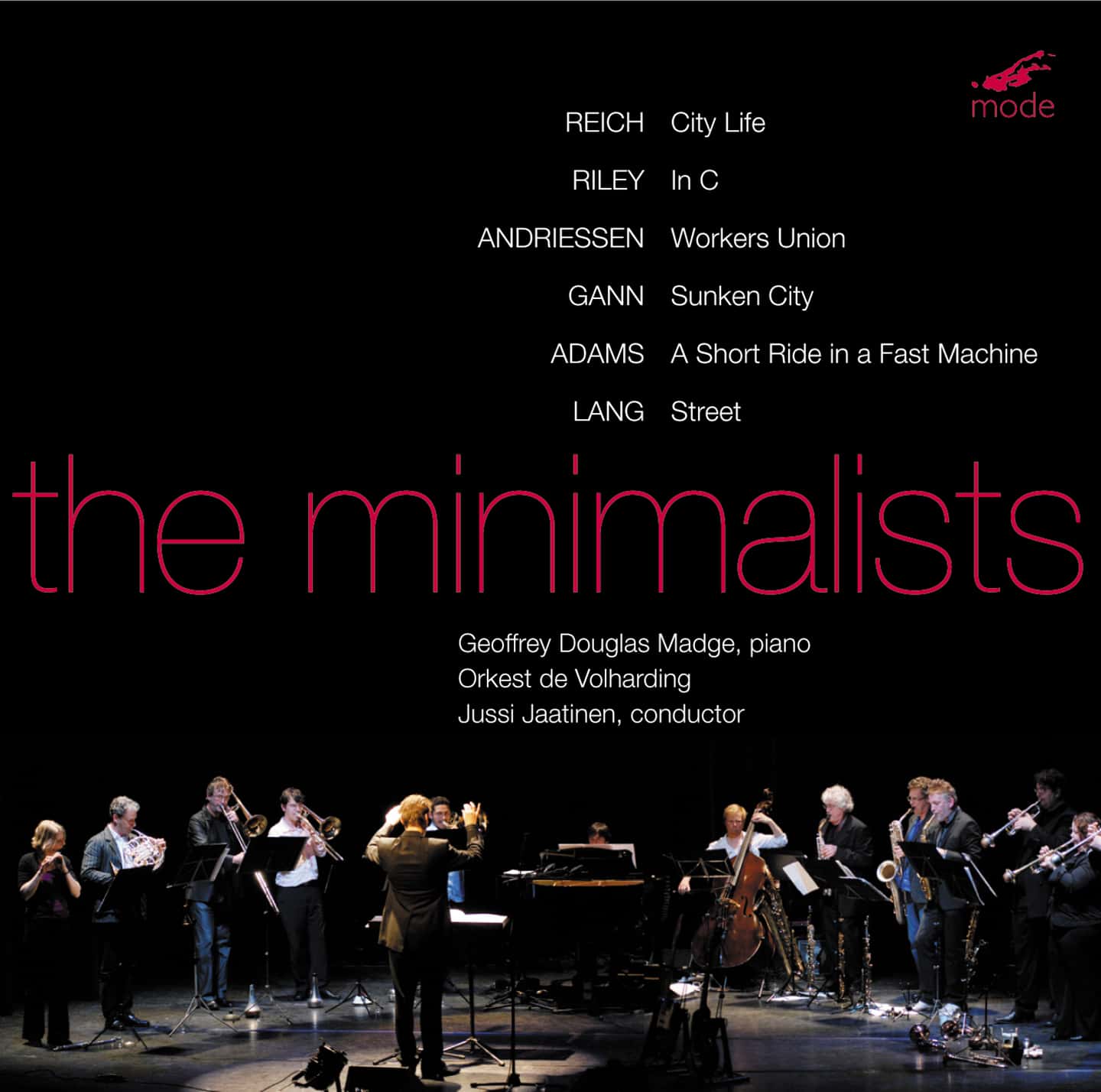Steve REICH (b.1936)
City Life (1995) 23:20
arranged by Anthony Fiumara (2005)
First Recording of this arrangement
Terry RILEY (b.1935)
In C (1964) 51:29
Louis ANDRIESSEN (b.1939)
Workers Union (1975) 17:15
Kyle GANN (b.1955)
Sunken City (Concerto for Piano and Winds in Memoriam New Orleans) (2007) 28:59
Geoffrey Douglas Madge, piano soloist
First Recording, written for Volharding
John ADAMS (b.1947)
Short Ride on a Fast Machine (1986) 4:07
arranged by Anthony Fiumara (2007)
First Recording of this arrangement
David LANG (b.1957)
Street (1993) 9:51
Orkest de Volharding
Jussi Jaatinen, conductor
In the spring of 1972, composer Louis Andriessen and saxophonist Willem Breuker brought together musicians from improvised and from traditional music, at a historical and tumultuous concert in the Amsterdam Carré theatre. They became the Orkest de Volharding (“obstinacy”, an ensemble of flute, 3 saxophones, 3 trumpets, 3 trombones, horn, piano and bass) which has distinguished itself internationally in the field of new music, with over 300 works written for them.
• Steve Reich’s City Life receives its first recording as scored for wind orchestra. authorized by the composer. It uses digital samplers among the instruments, triggering a wide variety of sound and speech samples, including car horns, air brakes, car alarms and many other sounds associated with the city. The use of the samplers extends the idea of using everyday sounds in music.
• Kyle Gann felt that the most successful musical model for brass, reeds, and piano was 1920s New Orleans jazz. The first movement of Sunken City is pure fun New Orleans Mardi Gras, a stylized portrait of the energy and harmonic language of the music of Jelly Roll Morton, Louis Armstrong, and Bix Beiderbecke. The much longer second movement is a kind of interrupted chaconne. Successive variations suggest stages related to the Hurricane Katrina tragedy – grief, outrage, nostalgia, and acceptance.
• In Street, David Lang envisions what kind of music a hip, dynamic, no-nonsense street orchestra (like Volharding) might play 400 years ago if it were not founded by Louis Andriessen but by Sweelinck.
• Louis Andriessen’s Workers Union was originally written for Volharding. This piece is a combination of individual freedom and severe discipline: its rhythm is exactly fixed; the pitch, on the other hand, is indicated only approximately, on a single-lined stave. It is difficult to play in an ensemble and to remain in step, sort of thing like organising and carrying on political action.
• Unquestionably the founding work of minimalism, Terry Riley’s In C challenges the standards of imagination, intellect, and musical ingenuity to which “classical” music is held. The one page score contains neither specified instrumentation nor parts, its 53 motives are compact, presented without any counterpoint or evident form. The composer gave only spare instructions and no tempo.
• Short Ride in a Fast Machine is a joyfully exuberant piece by John Adams. Volharding’s artistic director Anthony Fumara adds a little extra with his own arrangement, which fits the ensemble like a glove. In nothing flat it functions as a breathtaking four-minute exclamation m

